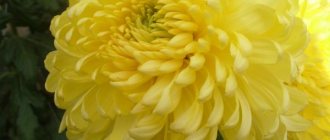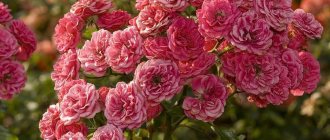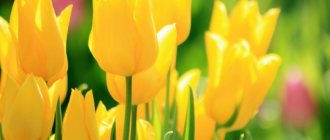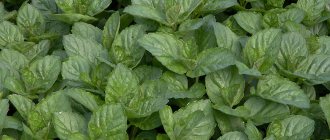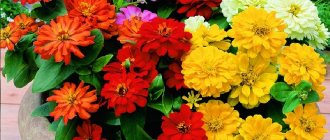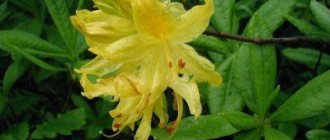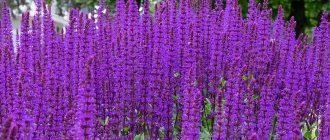Description and origin of the flower
Freesia, a corm plant, belongs to the iris or iris family. This is a fairly tall plant - up to one and a half meters in height with long, up to 20 centimeters, leaves. They are usually about two centimeters wide and are painted bright green.
Funnel-shaped buds with a wonderful aroma are painted in different colors - from delicate white to purple. The buds are located on one side of the peduncle covered with scales, in most cases branched and curved.
The flowers are simple and double, large - from 3 to 7 centimeters. The brush usually contains up to 15 flowers. Freesia is a native of the Cape region of South Africa. Therefore, it is sometimes called “Cape lily of the valley” or “Cape lily”. It usually grows in floodplain forests of rivers, often forming real impenetrable thickets up to one and a half meters high.
The beautiful freesia arrived in Europe in the second half of the 19th century, and perfumers first became interested in it. And only at the very end of the century they began to grow it to decorate gardens and interiors.
Freesia received its name in honor of the German botanist and doctor Friedrich Friese, who was the first to discover this flower in the rainforests of South Africa.
A charming lover of moist, warm forests, freesia has long been grown only as a greenhouse plant. In recent years, species and varieties have appeared that can be grown in open ground in the southern and western regions of Russia. Freesia has won the love of not only landscape designers, but also florists - very often it is the main theme of bride’s bouquets.
Freesia Freesia
Iris (iris) family.
Homeland South America, Cape Province, hence the name - 'Cape lily of the valley'. There are about 20 species of decorative flowering bulbous plants in nature. The genus is named after the German physician Friedrich Friese. Freesia hybrida is grown as a potted plant. Freesia hybrida is a plant about 50-60 cm tall, with narrow linear leaves about 20 cm long and 2 cm wide. Inflorescences on a long peduncle, bearing about a dozen flowers. The flowers are funnel-shaped, very fragrant, about 6 cm in diameter. The color of flowers can be very diverse: all shades of yellow, red, lilac, purple, white. To maintain their shape, freesia leaves need to be tied to a support, otherwise they hang, break and the bush does not look attractive.
Types and varieties, photos
There are approximately 20 different species of freesia in the wild and a huge number of varieties. But for growing indoors, its cultivated species are the most suitable. The most common are the following:
- F. Armstrong, reaching a height of 65-70 centimeters. Its panicle inflorescences are painted in various shades of red - scarlet, pink. This species blooms from May to June. Among the mass of varieties, the most common is the Cardinal variety.
- F. broken is distinguished by its miniature size - up to 40 centimeters. She requires the most careful care. White and orange flowers appear in mid-spring. Popular varieties are Alba and Odorata.
- F. is a hybrid, which successfully combines all the best qualities of F. Armstrong and F. broken. Tall bushes, often reaching a meter in height, produce flower stalks in spring with large flowers, up to 10 centimeters in diameter, in various shades of red, yellow and purple. The best varieties for home cultivation are Red Lion, Vinita Gold, Royal Blue.
All types and varieties of freesia are characterized by long - up to one and a half months - flowering. To prolong this splendor, usually the first peduncle with half-opened buds is cut off and placed in vases; flowering continues on the second order peduncles.
Popular varieties
Each type of freesia is good in its own way. The most popular are 3 varieties. If it’s hard to decide, you can buy a mix of different types as a set.
Armstrong's (Freesia armstrongii)
This is the most famous plant variety. The flowers are brightly colored and have a distinct scent. The white bell buds have orange spots at the base, and the perianths are purple-pink. There are varieties with red, purple or blue petals. Maximum height 65 cm, bud diameter 5 cm.
Alba (Freesia refracta var. alba)
Freesia Alba has a spikelet that splits during flowering. The inflorescence consists of 10 snow-white flowers. The petals are corrugated with a smooth transition to yellow at the base.
Alba in flowering period
Unlike other varieties, Alba does not have a pronounced odor.
Maximum height 35 cm, bud diameter 7 cm.
Fragrant (Freesia refracta odorata)
From the name it is easy to guess that the flower has a rich aroma. Fragrant has the smell of lily of the valley. The inflorescence consists of 6-8 bright yellow buds with orange spots at the bottom. Flowers in the shape of a narrowed tube. Bushes of medium density with an even thin stem.
Freesia growing and care at home
The main advantage of growing freesia at home is not only that it is possible in any climate zone. A big plus is that flowering occurs in the first days of April. You can get beautiful indoor flowers earlier - by the New Year, March 8th. This will depend on the timing of planting the bulbs.
Growing conditions
The main requirement is sufficient illumination. Therefore, for its placement, preference should be given to windows facing the sunny side.
Important! Freesia does not tolerate not only direct sunlight, but also a directly directed flow of light from additional illumination devices.
Pots with plants are shaded at any time of the year, using light translucent fabric or thin paper, preferably pure white.
The duration of daylight for freesia should be 14 hours a day, so it often needs additional lighting, especially in the winter months.
Freesia has a sharply negative attitude towards drafts, even in the warm season. Therefore, when ventilating the room, it is either moved to the next room or covered with plastic film, a cardboard partition, etc.
Freesia's soil requirements are also quite high. The substrate must have a neutral or alkaline reaction (ideally 6.0-6.8). It should be loose and nutritious and contain the following components: turf and leaf soil, humus, peat and sand.
In terms of nutritional value, the composition of the substrate for freesias is close to the soil for roses, however, its saturation with calcium, iron and magnesium in it should be reduced, and the amount of potassium and phosphorus should be increased.
Maintaining the required temperature is the most difficult part of caring for a plant.
Important! When growing freesia, it is necessary to constantly maintain a temperature of +22˚С from the moment the leaves appear.
When the first buds appear on the peduncles, freesia will easily tolerate higher temperatures. A native of the floodplain forests of South Africa, freesia loves not only well-moistened soil, but also high air humidity. At the same time, like all bulbous plants, it does not tolerate stagnation of water in the soil. Therefore, there must be a drainage layer of at least 2 centimeters at the bottom of the pot.
To better retain moisture in the soil, peat mulch is usually used. To maintain air humidity, open containers with water are placed next to the pots. Spraying freesia is also allowed, but only before the flower stalks appear: when water gets on the buds, they most often fall off.
Tall varieties of freesia also require support, especially F. broken, its stems are quite fragile (hence the name), and peduncles reach 70-80 centimeters in length.
Optimal soil composition for freesia
Freesias do not like heavy clay soils. The most favorable soils for them will be light, oxygen-rich soils. You can prepare the soil for plants by adding peat, humus, turf and sand.
If you plan to grow flowers at home, then ready-made soils for bulbous plants or universal soil with the addition of peat, sawdust, and perlite are suitable. Be sure to use drainage such as brick chips, charcoal.
Expert opinion
Yulia Yurievna
I have a large garden and vegetable garden, several greenhouses. I love modern methods of cultivating plants and mulching the soil, and I share my experience.
Ask a Question
If you need to improve the soil before planting freesia, we recommend using only deoxidized peat. Or, you need to additionally add ash and dolomite flour to the soil. To make the soil lighter, you can add old sawdust. It is important to use old ones that have lain for at least a year, because sawdust from fresh wood can draw nitrogen from the soil. The same material can be used for drainage. Expanded clay or gravel are suitable for the same purpose. When preparing the soil, it is important not to make it too light. Under these conditions, stagnation of moisture does not threaten the rhizome, but such soil will dry out very quickly. Lack of water can also negatively affect the condition of the flower. It’s not just about the moisture itself; in such conditions, the roots cannot be fully saturated with fertilizers and nutrients. When the soil preparation work is completed, you need to take a slightly damp handful of soil and squeeze it in your palm; if the lump holds its shape, but begins to quickly disintegrate, the structure is optimal. If the soil mixture immediately crumbles and is too light, you can add fertile soil from the plot or from the forest to the substrate.
How to plant freesia at home
You can grow beautiful freesia using two main methods of propagation: from seeds or from bulbs. Moreover, the latter method involves both using a daughter bulb as planting material and dividing the mother bulb.
Growing freesia from seeds
Freesia seeds are usually sown in April-May.
Important! The fresher the seeds, the better their germination.
Before planting, they are kept for a day in a pale pink solution of potassium permanganate at room temperature. Planting is carried out in seedling boxes or containers, preferably with steamed compost. Ready-made soil for freesias is also suitable. Then the containers are covered with polyethylene. Ventilate mini-greenhouses daily for at least 20 minutes.
Sprouts appear in about 3-4 weeks. If necessary, they are given extra light, watered regularly, the soil is lightly loosened, and fertilizers containing potassium and phosphorus are applied weekly. The grown sprouts are planted in separate paper cups or in separate pots.
Important! Self-collected seeds do not guarantee the production of plants with the varietal characteristics of the parent plants.
Growing freesia from bulbs
Interesting! Depending on the planting of the bulbs, flowering freesias can be obtained for various holiday dates in winter:
- for bright New Year's holiday decorations, the bulbs are planted at the very beginning of September;
- for February flowering (for Valentine's Day), the planting date will be early October;
- A festive fragrant bouquet of freesias for March 8 begins to be grown in the last 7-10 days of October.
The timing of planting freesia corms may vary. Some varieties require a longer forcing period - 5-6 months.
Important! Freesia bulbs must rest for at least three months before planting!
The best results are obtained by bulbs of the 1st and 2nd parsings, that is, the largest ones. Before planting, the bulbs are soaked in a disinfectant solution. It is prepared from azotobacterin, or potassium permanganate, or boric acid. Azotobacterin take 0.05 g of the drug per liter of water, potassium permanganate or boric acid will be enough at 0.01 g per liter of water.
After soaking for an hour, the bulbs are washed with running water and treated with root formation stimulants (Epin, Kornevin or home remedies).
Pots intended for planting freesias should be deep, up to 30 centimeters, with a diameter of 15-18 centimeters (4-6 bulbs are planted depending on the size). They must be clean and disinfected.
At the bottom of the container, lay a layer of expanded clay, or pieces of brick or pebbles mixed with charcoal or wood ash. This additive will prevent acidification of the soil or the appearance of rot.
Then soil is poured into the pots. It is advisable to place a stick of long-acting potassium-phosphorus fertilizer under the place where the bottom of the onion is supposed to be. This stick will eliminate the need for regular fertilizing.
The bulbs are planted at a distance of 5 centimeters from each other. The planting depth of the bulbs in the pot is also 5 centimeters. Cover the bulbs with loose soil. Pots with planted bulbs are kept in a cool room - +15˚С.
Important! During the period of rooting and germination of the bulbs, neither watering nor fertilizing is carried out. As soon as the first shoots appear, the pots are moved to a well-lit, warm place and begin to be watered.
Propagation methods used for garden and indoor flowers
Freesia reproduces using daughter bulbs or seeds. The first method is suitable for beginners; with its help you can quickly and easily get a new plant.
Propagation by bulbs
Freesia flower - growing and care in the garden
During flowering, the mother bulb begins to produce babies. After the dry buds fall off, you need to trim off all remaining flowers and foliage. If this is not done, the plant will spend resources on producing seeds rather than growing bulbs.
The babies are separated from the mother's bulb and stored separately. Daughter bulbs are planted in the ground at the same time as the mother bulbs in late April - early May. A mixture of sand and crushed coal should be added to the planting hole.
Propagation by seeds
Not the most common way to propagate plants, as the process takes a year. The best period for sowing seeds in the ground is the beginning of spring. Freesia seeds are burgundy, glossy, and berry-like.
In early March, they are soaked in cold water for 24 hours. Next, the seeds are sown shallowly in a nutrient mixture of humus, sand and peat. It is necessary to use a drainage layer of expanded clay, since excess water will destroy the plant.
The pot is covered with film. It should be opened twice a day for ventilation. Within 1-2 weeks, small sprouts will appear, which should be frequently irrigated with a spray bottle. After a month, the film is removed.
Note! Next, the sprouts should be kept in the same conditions as an adult plant and fertilized regularly. Freesia will bloom by February.
Basic rules of care
The main care measures when growing freesias are additional lighting during the short daylight hours in autumn and winter, installing supports for flower stalks, watering and spraying, maintaining humidity and air temperature, and fertilizing.
Important! Water the freesias with water at room temperature, standing for at least two days!
Water the plants every other day, but moderately. Excess water that has flowed into the pan is drained to prevent waterlogging of the soil. Both watering and spraying are best done in the morning.
Freesias are fed with potassium- and phosphorus-containing fertilizers from the moment the buds appear until the leaves almost completely turn yellow. The frequency of feeding is once every two weeks.
Why doesn't freesia bloom?
There are several reasons for the lack of inflorescences:
- The planting material did not go through a long warming up stage before planting.
- The low level of air humidity in the room caused the tubers to dry out. The stems will not be able to form inflorescences. Therefore, the material should be planted in the soil to form new children. In autumn, the extracted tubers must be stored in a well-ventilated area. Next year the new bulbs will be able to produce many abundant blooms.
- Purchasing infected tubers. A latent infection causes freesia to rot after planting.
- If in the first week after planting in open ground the plant was subjected to a sharp decrease or increase in temperature, buds may not appear.
Planting freesia bulbs in pots in spring
Typically, bulbs are planted in pots in spring in regions with short summers. The planting process is identical to the autumn one.
Pots with seedlings are placed in the open air - a balcony, a veranda, or a garden. In this case, the place for the pots should be chosen taking into account all the requirements for growing freesias:
- light partial shade;
- reliable wind protection.
In this case, by autumn the freesias will produce flower stalks. It would be advisable to bring the pots into the house (apartment) in mid-August. At the end of the month or in the first week of September, the plants will begin to actively bloom.
How to make a plant bloom?
Freesia may not bloom due to improper storage of seed. If the bulbs are stored for a long time in a cool room, they fall asleep. Such tubers bloom poorly or may not germinate at all for several years.
In order for the flower not only to grow, but also to bloom, at the initial stage of germination the air temperature should be 15 degrees. After the bulb germinates, it is increased to 25 degrees.
Beautiful! A bright ornamental plant - Aubrieta perennial.
Freesia is grown on the eastern or western side, since with a lack of light, the flower stalks stretch, most of the buds fall off, the leaves fade, and the plant loses its decorative appearance.
Freesia is a welcome guest in any garden. It looks harmonious in single plantings, in combination with cereals and in mixborders of spicy aromatic herbs. Plants planted in a pot will decorate alpine hills and rocky gardens. But in order for freesia to delight with long and beautiful flowering, you need to surround it with care and love.
Caring for freesia after flowering
After the end of flowering, at the beginning of the process of yellowing of the leaves, the peduncles of freesias are removed. Watering nevertheless continues to allow the bulbs to acquire daughter bulbs.
Stop watering 6 weeks after removing the flower stalks. When the substrate in the pot is completely dry, the bulbs are dug up, washed in a solution of potassium permanganate, excess scales are removed and dried.
Reproduction technique
Freesia is an indoor plant that is easy to propagate. Flower growers are offered two methods to choose from - seeds and corms.
- Seeds. Used to grow a new hybrid variety. Before sowing, the seeds are soaked for a day in a weak solution of potassium permanganate. The boxes are filled with nutrient soil. The optimal composition is an equal amount of leaf soil and turf. The seeds are distributed over the surface and lightly sprinkled with soil. Under glass or plastic film, seedlings appear faster - after 3 weeks. Young seedlings continue to be kept under cover for some time to maintain consistently high humidity. For active growth, they are fed weekly with phosphorus and potassium.
- Corms. During the growth process, the main bulb produces children. They can be carefully separated and used for planting in a separate pot. Before planting, the bulbs are kept for half an hour in a weak solution of potassium permanganate and dried. Plant several pieces in a pot, deepening them by an average of 5 cm. Watering begins only after the sprouts appear.
Bulb storage
The dug up and processed freesia bulbs are sorted by size and placed in nets or bags made of rare fabric. If there are a lot of onions, you can put them in a wooden or plywood box.
Storage temperature 20-25˚С, air humidity 80%. If the humidity in the room is lower, place an open container filled with water under the container where the bulbs are located. At least once every 4-5 weeks, the bulbs need to be sorted and carefully examined in order to promptly detect the onset of diseases or rotting processes. You can also store the bulbs in boxes, sprinkled with dry peat, this reduces the risk of putrefactive processes.
Important! Storing bulbs in the refrigerator is not allowed.
Before planting, 4-5 weeks before planting, the bulbs are moved to a cooler room, with a temperature of no more than +15˚C.
Forcing and replanting an African princess
Since freesia can be grown throughout the year, experienced flower lovers use various methods for this. The most popular option is forcing. The process takes about 20 weeks, after which the house is transformed into an original greenhouse.
It is best to plant freesia for forcing seasonally, having previously calculated the period of its growth and flowering. As a result, the buds can be admired in early spring, in the cold of winter or in late autumn. The process begins with planting tubers in containers. Then they are brought into a room where the temperature does not exceed 16°C. They must stay there for 7 weeks. In winter, the plant needs additional lighting. If all forcing rules are followed, the house will be filled with delicate flowers at any time of the year.
Freesia is most often transplanted in the spring. The procedure is performed in a room where the temperature does not exceed 15°C. It is important to maintain such a microclimate for 3 weeks until the first shoots appear.
Pests and diseases of freesia
When grown at home, freesia can be attacked by common pests of indoor plants - spider mites, aphids, thrips. All of them are sap-sucking, and parasitize on plants, feeding on their juices, depleting them. Thrips, moreover, often carry pathogens of viral diseases.
If there are a small number of pests, they are usually removed by hand, and then the plants are treated with a solution of laundry soap, infusions of garlic or onions with vodka or alcohol. If there are a lot of pests, they resort to chemicals - Actellik, Fitoverm.
Important! In most cases, pests appear on freesias as a result of non-compliance with care rules.
Among the diseases of potted freesias, the most common are fusarium, various rots, and scab. Pre-planting disinfection of bulbs and seeds is designed to reduce the risk of disease. For the same purpose, charcoal or ash is added to the substrate.
When a disease is detected, freesia is first isolated from other plants. Then it is dug up and the bulb is processed. If the damage is significant, the diseased specimen must be destroyed.
If you carefully follow all the rules of care, watering regimes, temperature and humidity, freesias get sick very rarely.
Comments (2)
Lisa
06/06/2017 at 00:28 |
I really like freesia, I always wanted to see such a beautiful flower in my dacha, the only problem is that I don’t have time to care for it, so I only admire indoor flowers.Answer
Yulia Expert Plodogorod
06/24/2019 at 22:09 |
Hello Lisa! If you prepare the conditions in advance and use some agricultural techniques, then caring for the described plant will not be too burdensome.
Freesia requires plenty of light, but does not tolerate direct sunlight very well. Therefore, so that you do not need to constantly shade the flower, you can plant it near a spreading tree or install scattering nets.
This device is useful for many crops that are afraid of sunburn. You can organize entire flower beds under a canopy, or arrange a recreation area there.
For example, you can put wicker garden furniture and plant beautiful flowering plants such as freesia nearby. In addition, the described conditions comply with the requirement of draft protection.
The soil for the flower must be fertilized in advance with rotted humus. Also, it doesn’t hurt to add deoxidized peat when planting. This will make the soil loose and provide good oxygen access.
We would like to note that this soil mixture is also suitable for home growing. It is prepared from the listed components, as well as leaf and turf soil. All components are in equal proportions.
Plants of this species with narrow leaves and not very large buds are less demanding; they can be planted a little denser than varieties with a more spreading crown.
Be sure to remove faded buds, as they not only spoil the decorative appearance, but also drain the plant’s strength. Depending on the variety, support may be required.
Monitor the condition of the flower; if it cannot hold the stems on its own and falls under the weight of the buds, tie it to something. Now there are quite beautiful decorative supports of different colors and shapes. Moreover, they are made of both metal and plastic.
The plant likes a humid environment, so spraying can be done in the evening. But, if you don’t have time for this, you can simply place a container of water near the plant or plant it near a decorative pond.
When the bulbs are planted in open ground, we recommend mulching the area under the flower with peat or old sawdust. This will protect the rhizome from overheating.
We recommend watering the soil with a manganese solution before planting. This will protect the plants from some fungal diseases. If you plant flowers on agrofibre, you can forget about weeds.
Answer
Growing problems
The most common problem that gardeners face when growing freesia is the lack of flowering. This occurs even more often than diseases or pest attacks. The lack of flowering is usually associated either with the age of the bulb - it has not reached the required degree of maturity, or with violations of the temperature conditions of storage, rooting and germination of planting material.
In the first case, there is nothing terrible; at the end of the season, the bulbs are dug up, processed and sent for storage. They are planted for the next season.
In the second case, freesias actively expel foliage, and perhaps even flower stalks with buds appear. But the buds either fall off after a short time or turn out to be empty. In this situation, again, you should dig up the bulbs, examine them for diseases and store them.
Growing freesia from seeds
I didn’t really believe in the success of my idea - to grow flowering freesia from seeds In the literature I found detailed information about forcing freesia from bulbs, but I found only a mention of seed propagation.
I had to act at random... Before planting in mid-March, I soaked the seeds in a warm Epin solution and placed them on the radiator overnight. In the morning I sowed it in a plastic container, and did not embed the seeds in the soil, but spread them on the surface, pressing them tightly with my finger. Covered it with transparent film and placed it on the windowsill. Every day I turned the film over, because it was thickly covered with evaporating moisture. Sprayed the soil with warm, settled water.
The first shoots appeared very quickly, 10 days after sowing. She immediately began to reduce the time the seedlings spent under the film, and by the beginning of April she removed it completely. By this time, my little bowl was completely filled with young green sprouts, of which there were about two dozen.
At the beginning of May, I began to plant seedlings. I planted them in two spacious pots at a distance of at least 5 cm. I prepared a soil mixture from turf soil, peat and sand (2:1:1). I laid drainage at the bottom of the pots: a high layer of expanded clay with the addition of pieces of charcoal. The stems of freesia are quite thin and fragile, so I immediately stuck a 30 cm long bamboo stick into the ground next to each plant, and high bamboo supports in the center of the pots. As it grew, the plant was tied up. There were pots with freesias on the southern windowsill without shading. I always kept the soil moist, sprayed the plants daily, opened the window every day for ventilation, and in October I started feeding the freesias with an infusion of bird droppings (twice a month).
In February, a miracle happened: I saw freesia flowers ! There was no limit to the joy. Bright and multi-colored, they filled the room with a subtle aroma reminiscent of lily of the valley. It’s not for nothing that freesia is also called Cape lily of the valley. After flowering ended, I took the freesia pots outside, gradually reduced watering, and at the end of June stopped it altogether.
Final part
Growing freesias at home is a rather complicated but interesting process. Freesia enthusiasts actively support communication on specialized forums (bestflowers.ru, forum-flower.ru, frauflora.ru), exchange information, consult, but mainly share their successes and post beautiful photographs of their pets.
Capricious at first glance, freesia, the cultivation of which requires special attention and careful care, justifies the difficulties with an unusually rich aroma and exquisite beauty. In addition, when grown at home, freesia not only decorates the interior. It also helps fight depression, relieves fatigue, and eliminates various pains.
Characteristic problems and diseases
The flower is affected by diseases typical of bulbous representatives. Lack of proper care leads to the appearance of various pests. Most often, thrips, spider mites and aphids appear on the crop.
The list of the most common bacterial and fungal infections includes fusarium, scab and rotting of various origins. As preventive measures it is necessary:
- Periodically clean the plant from affected areas.
- Treat leaves and stems with pesticides to protect against insects.
- The extracted bulbs should be thoroughly cleaned of contaminants and disinfected with potassium permanganate.

